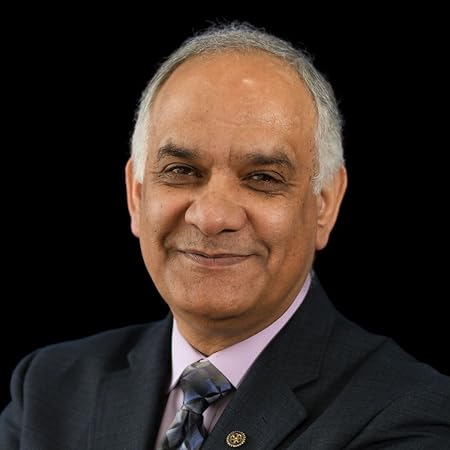America’s family caregivers are frequently described as the “backbone” of our long-term care capacity. Yet even as their numbers rise dramatically, caregivers are facing a set of pressures – financial, emotional, and physical – that has placed our care system in grave jeopardy. As a result, says a just-released study, our caregivers are at a crisis point that demands urgent action.
That was our take-away as we read this eye-opening article from AARP about the new report. Titled Caregiving in the U.S., the voluminous study represents the sixth update in a research series that goes back to 1997. The project, jointly produced by the National Alliance for Caregiving (NAC) and AARP, is widely regarded as one of the most authoritative data resources on family caregivers in America. According to the article, “The 2025 update is the most comprehensive study of this critical area of American life to date.”
140 Pages of Data Detailing America’s Caregiving Crisis
We can only hit the high points in this 140-page document, but this much is clear: the caregiver crisis affects every American, not just those receiving or providing care. If our precarious system collapses, we’re all going to have to reap the social and fiscal consequences. Let’s take a deeper dive.
The Caregiving in the U.S. 2025 survey used a nationally representative, probability-based online panel from IPSOS. The study surveyed 6,858 caregivers aged 18 or older who had provided care for an adult relative or friend 18+, or a child with a complex medical condition or disability within the past 12 months.
“Sweeping” Report Reveals Bleak Condition of Family Caregiving
In late July, the article begins, AARP and the National Alliance for Caregiving released their “sweeping new report” on family caregiving in America. The article describes the situation as “stark.” The implication is clear that America is facing a hidden caregiving crisis.
“Caregiving in the U.S. 2025 reveals that 63 million Americans—nearly 1 in 4 adults—provided ongoing care for an adult or a child with a complex medical condition or a disability in the past year,” AARP reports. What’s more, the total number of caregivers actually grew by 20 million in the decade between 2015 to 2025 – a truly astounding statistic. The overwhelming majority of these 63 million caregivers – 59 million – were caring for someone over 18.
The 140-page report is available here.
Providing Complex Care, Often in Isolation, with Little Training
“Family caregivers are a backbone of our health and long-term care systems—often providing complex care with little or no training, sacrificing their financial future and their own health, and too often doing it alone,” said AARP CEO Myechia Minter-Jordan.
Jason Resendez, President and CEO of the National Alliance for Caregiving, echoed that sentiment. He described “ordinary Americans providing extraordinary care,” adding that the data paints a dire picture of “the daily reality that 63 million Americans shoulder every day.”
“We cannot continue to treat family caregiving as invisible labor,” Resendez stated. He called for “a national reckoning” concerning the value of family care, and for government and private industry to enact policies that “reflect the essential role family caregivers play in our society.”
In-Depth Study Paints a Comprehensive Picture of a Hidden Crisis
The Caregiving in the U.S. 2025 survey is a truly representative study of the face of family caregiving in America. The AARP article reports that study surveyed nearly 6,900 caregivers aged 18 or older, each of whom had provided care within the past 12 months, either for an adult relative or friend or for a child with a complex medical condition or disability.
As noted above, the study was first conducted in 1997, and was repeated in 2004, 2009, 2015, and 2020. For the 2025 study, the cost was borne by AARP along with major national foundations, insurance firms, and one pharmaceutical company.
Article Offers a Few Highlights from Caregiving in the U.S. 2025
The summary of the newly-released study provided onli9ne by AARP listed several highlights. Among them:
Caregiving is a full-time job: We were surprised to read than nearly one-quarter of all family caregivers report providing 40 hours of care or more per week. This group also has a lot of caregiving experience: about one in three have been caregiving for five years or more.
America’s “Sandwich Generation” is stretched thin: “Nearly 1 in 3 caregivers are also raising children under 18 while caring for an adult loved one,” says the AARP article. Percentages are higher for Latino caregivers (43 percent) and Black caregivers (36 percent).
Financial strain is widespread: It comes as no surprise that caregiving triggers major financial sacrifices. “Nearly half of caregivers experienced at least one major financial impact—such as taking on debt, stopping savings, or being unable to afford food,” AARP reports.
Workplace support is vital and growing: According to the article, roughly 60 percent of family caregivers are also employed, and half of them “report experiencing work disruptions,” especially being forced to arrive late or leave work early. Fortunately, more employers are starting to offer family caregiving related benefits like flex time and caregiving assistance – although, says AARP, salaried workers have better access to these than hourly workers.
Caregivers’ health is suffering: According to the AARP report, “1 in 5 caregivers report being in fair or poor health, and nearly 1 in 4 say they struggle to care for their own health due to caregiving responsibilities. Reports of emotional stress have risen since 2020.”
Training is lacking: Even though caregivers are being asked to do more and more, nearly 90 percent have no medical training to assist with activities of daily living (ADLs) or instrumental activities of daily living (IADLs). “Just over 20 percent of caregivers have received formal training on medical and nursing tasks despite over half managing complex medical and nursing tasks like injections, wound care, or medication management,” says AARP
(We encourage you to check out this Blog article on activities of daily living from a few months back.)
The vast majority are still unpaid: “While 11.2 million family caregivers now receive some compensation,” says the article, “most are still unpaid.” This clearly puts a long-term strain on their earning potential and their ability to save for retirement or increase their eventual Social Security benefits.
Report Triggers Push for New Policies to Benefit Caregivers
As we know, AARP is primarily an advocacy-driven organization, and this newly-released report has prompted a slew of recommendations.
“The report calls for immediate, sustained action in policy and practice,” says the article — “from expanding paid leave and respite services to ensuring financial, emotional, and training supports reach the caregivers who need them most.”
We’ll give AARP CEO Myechia Minter-Jordan the last word. “As our population ages,” she states, “we must act boldly to support people providing this crucial source of care. At AARP, we’re urging Congress to pass a federal tax credit to provide some financial relief for caregivers who are paying, on average, roughly $7,200 a year out-of-pocket in caregiving expenses.”
We’ll obviously be watching for any changes in policies or laws that might benefit family caregivers. Meanwhile, you can visit www.aarp.org/caregivingintheus2025 and www.caregivingintheus.org for more information on the report and its contents.
Rajiv Nagaich – Your Retirement Planning Coach and Guide
The long-awaited book by Rajiv Nagaich, called Your Retirement: Dream or Disaster, has been released and is now available to the public. Retirement: Dream or Disaster joins Rajiv’s ground-breaking DVD series and workbook, Master Your Future, as a powerful planning tool in your retirement toolbox. As a friend of AgingOptions, we know you’ll want to get your copy and spread the word.
You’ve heard Rajiv say it repeatedly: 70 percent of retirement plans will fail. If you know someone whose retirement turned into a nightmare when they were forced into a nursing home, went broke paying for care, or became a burden to their families – and you want to make sure it doesn’t happen to you – then this book is must-read.
Through stories, examples, and personal insights, Rajiv takes us along on his journey of expanding awareness about a problem that few are willing to talk about, yet it’s one that results in millions of Americans sleepwalking their way into their worst nightmares about aging. Rajiv lays bare the shortcomings of traditional retirement planning advice, exposes the biases many professionals have about what is best for older adults, and much more.
Rajiv then offers a solution: LifePlanning, his groundbreaking approach to retirement planning. Rajiv explains the essential planning steps and, most importantly, how to develop the framework for these elements to work in concert toward your most deeply held retirement goals.
Your retirement can be the exciting and fulfilling life you’ve always wanted it to be. Start by reading and sharing Rajiv’s important message. And remember, Age On, everyone!
(originally reported at https://press.aarp.org)


